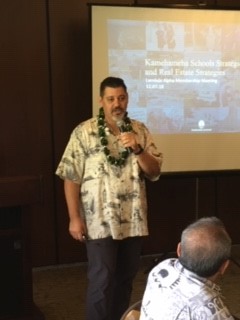KeyNote Submission
This curated collection of published or publishable content authored by LAI members showcases our industry’s best thought leadership. Articles and excerpts share a wealth of knowledge — from industry trends and academic research to expert perspectives.
KeyNotes Post Suggestions:
Content for KeyNotes posts consist of land-economics topics and directly relate to a LAI member, chapter, or a global LAI event.
Chapter meeting synopses are perfect for KeyNotes posts as well as articles written by a LAI member or honoring a member.
Personal or business travel that ties in land economics within images and copy are interesting KeyNotes posts.
Peruse past KeyNotes posts for inspiration on crafting a unique post.
Articles of any length are accepted, though long articles may be best broken into a series. Multi-media material such as ppt, charts, video, links to other material, etc. are often integral to substantiating post content.
Bringing Together
Foresight.
And Insight.
Land Development Plans of Kamehameha Schools
December 10, 2018

 The Aloha chapter met for its quarterly luncheon meeting on December 7th at the Oahu Country Club to hear a presentation on future land development plans from Walter Thoemmes, Managing Director, Commercial Real Estate Division, of Kamehameha Schools (KS). Formally known as the Bishop Estate, KS is a charitable trust created near the end of the 19th Century by Princess Bernice Puahi Bishop, last lineal descendant of Hawaii’s kings, for the education of native Hawaiians. The res of the trust, presently valued at $11.5 billion, consists primarily of 15,000 acres of land together with some US mainland investments, $3.5 billion of which is commercial properties on about 275 sites. The trust disburses about 4% of its valuation annually to the Kamehameha School campus, one of the largest private schools in the United States, and to various outreach venues for construction, managing and funding for native Hawaiian students. Therefore a major goal is to invest and use the res of the trust to generate income for its primary educational mission. KS also sees as part of its mission the preservation and creation of economic opportunity and lifestyle for its graduates. The principal real estate development strategy currently being pursued by KS is an “urban strategy” to take advantage of investment and development opportunities at and around transit stops planned for Honolulu’s fixed guideway rapid transportation (HART) project currently under construction from its second city, Kapolei, near Pearl Harbor, to downtown Honolulu. KS is developing regional partnerships which will provide for affordable housing and infrastructure as well as commercial development. Giving its assets and nonprofit status, KS can well afford to continue to play a “long game” in developing its considerable real estate holdings, particularly on Oahu (Honolulu).”
The Aloha chapter met for its quarterly luncheon meeting on December 7th at the Oahu Country Club to hear a presentation on future land development plans from Walter Thoemmes, Managing Director, Commercial Real Estate Division, of Kamehameha Schools (KS). Formally known as the Bishop Estate, KS is a charitable trust created near the end of the 19th Century by Princess Bernice Puahi Bishop, last lineal descendant of Hawaii’s kings, for the education of native Hawaiians. The res of the trust, presently valued at $11.5 billion, consists primarily of 15,000 acres of land together with some US mainland investments, $3.5 billion of which is commercial properties on about 275 sites. The trust disburses about 4% of its valuation annually to the Kamehameha School campus, one of the largest private schools in the United States, and to various outreach venues for construction, managing and funding for native Hawaiian students. Therefore a major goal is to invest and use the res of the trust to generate income for its primary educational mission. KS also sees as part of its mission the preservation and creation of economic opportunity and lifestyle for its graduates. The principal real estate development strategy currently being pursued by KS is an “urban strategy” to take advantage of investment and development opportunities at and around transit stops planned for Honolulu’s fixed guideway rapid transportation (HART) project currently under construction from its second city, Kapolei, near Pearl Harbor, to downtown Honolulu. KS is developing regional partnerships which will provide for affordable housing and infrastructure as well as commercial development. Giving its assets and nonprofit status, KS can well afford to continue to play a “long game” in developing its considerable real estate holdings, particularly on Oahu (Honolulu).”
David Callies, FAICP
Scribe/historian
